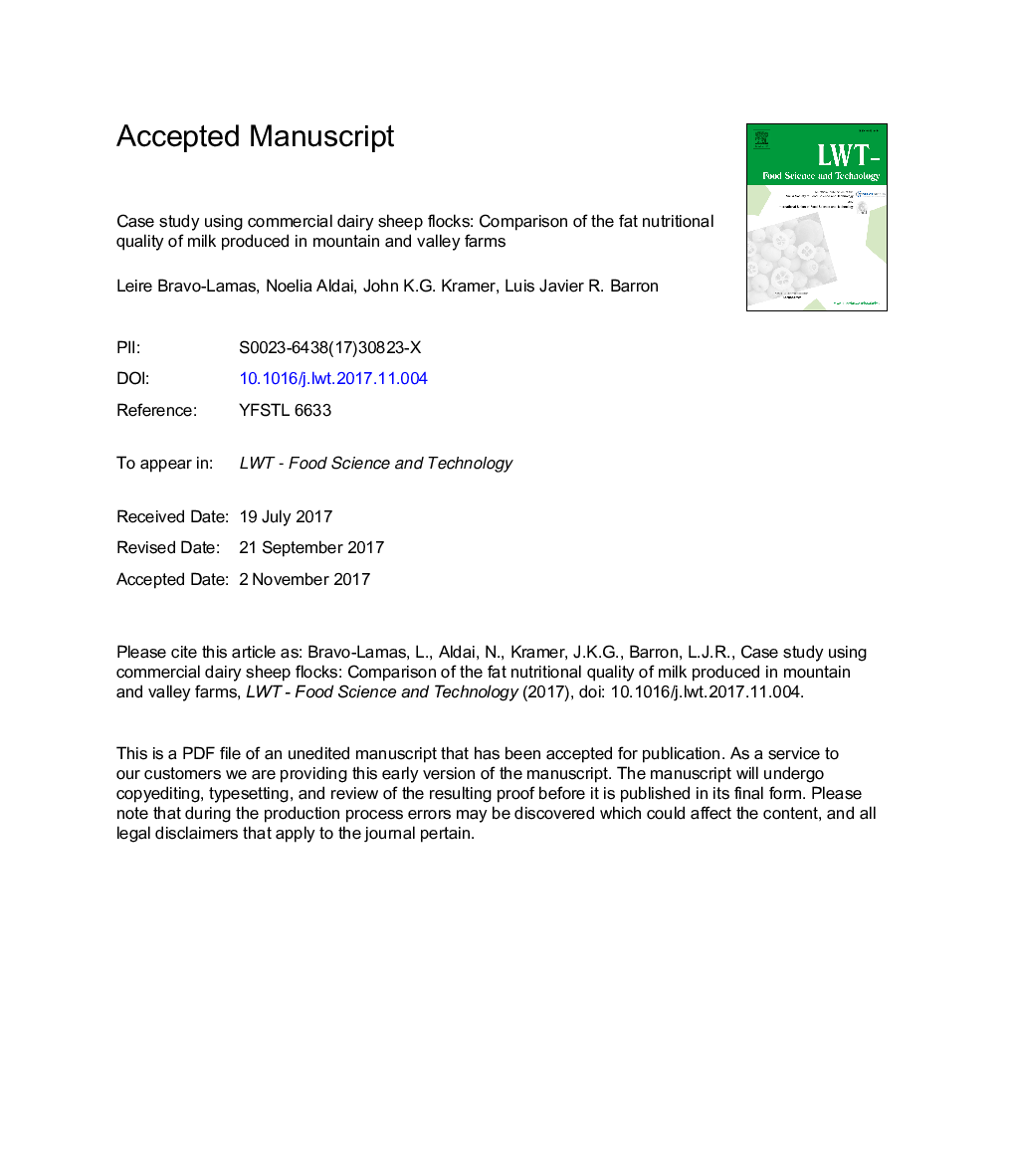| Article ID | Journal | Published Year | Pages | File Type |
|---|---|---|---|---|
| 8891967 | LWT - Food Science and Technology | 2018 | 30 Pages |
Abstract
The study was conducted under real grazing conditions and addressed the hypothesis that the fatty acid composition of milk from ewes reared in mountain farms is more beneficial from human health perspective compared to milk from valley farms. Bulk raw milk from six commercial flocks was sampled during the milking period from May to June. Flocks were managed under extensive grazing but, according to usual local practices in valley farms, sheep diet was supplemented with a small amount of concentrate in May. Botanical species from mountain and valley areas where commercial flocks grazed were also collected. Sheep milk from mountain farms showed higher fat content that was richer in α-linolenic acid and its biohydrogenation intermediates, long-chain saturated, branched-chain, and cis-monounsaturated fatty acids compared to milk from valley farms. Differences in fatty acid profile of botanical species plus the concentrate supplementation given to sheep in May were the factors that mostly influenced the fatty acid composition of milk from mountain compared to valley farms. Overall, this approach has evidenced that milk produced in mountain regions of northern Spain would add value to the 'mountain product' label, and would contribute to maintain a resilient and sustainable dairy production system in these areas.
Related Topics
Life Sciences
Agricultural and Biological Sciences
Food Science
Authors
Leire Bravo-Lamas, Noelia Aldai, John K.G. Kramer, Luis Javier R. Barron,
